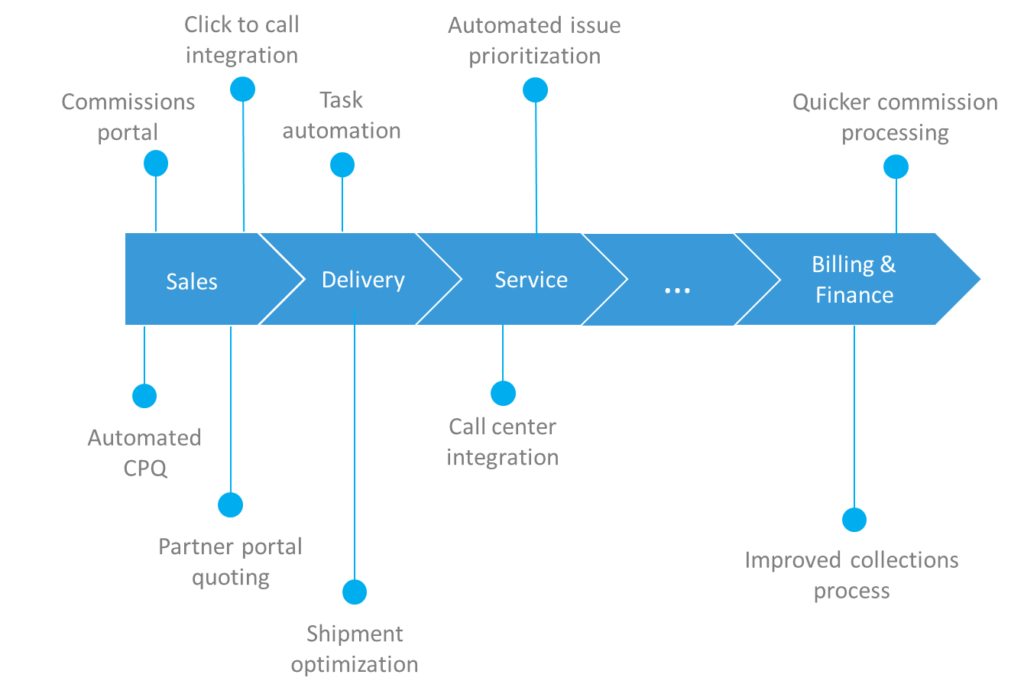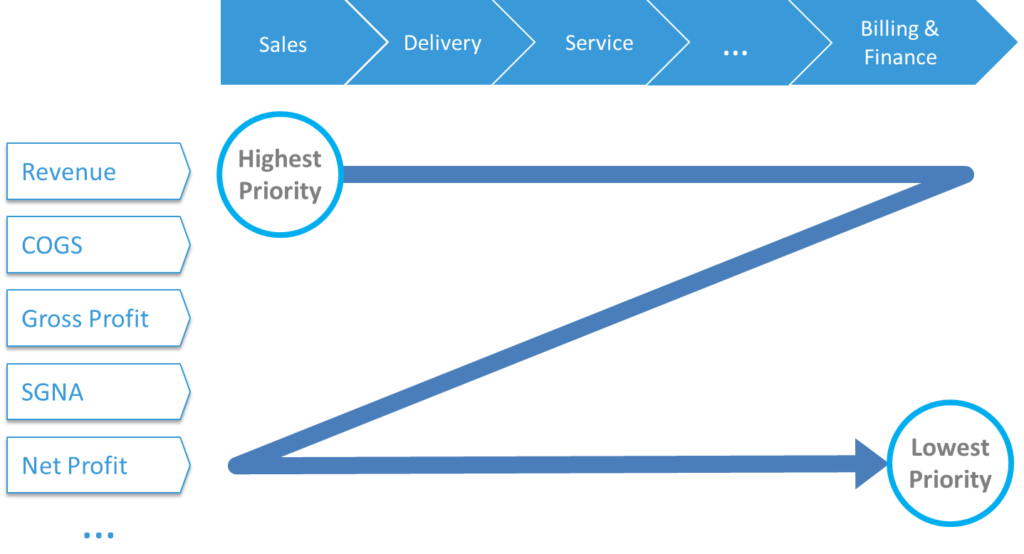Establishing Quote-to-Cash Optimization Priorities: A Simple Model
The Need for Quote-to-Cash Optimization
Quote-to-Cash optimization is an ongoing process that helps organizations drive growth and maintain a competitive edge.
This optimization typically consists of several targeted projects, each focused on resolving inefficiencies and bottlenecks in key business areas, such as sales, customer support, billing, and others.
Common Quote-to-Cash optimizations include:
- Rapid quote generation by using a CPQ (Configure Price Quote) tool to reduce workload on the quoting team.
- Click-to-call and automated call logging by integrating CRM with VoIP telephony, enabling sales reps to increase their call volumes.
- Enhanced account management by consolidating and adding more detailed information to CRM account screens, allowing managers to quickly access critical account data.
- Automated vendor order placement, reducing error rates and minimizing manual efforts.
- Faster call center response times for improved customer experience, e.g., by adding data to CRM object layouts reducing amount of time that takes support team to look for information while on customer calls.
- Improved employee performance metrics and incentives, ensuring time is spent efficiently and aligned with organizational goals.
These optimizations, along with many others, help organizations streamline operations, improve performance, and deliver better results.

Quote-to-Cash optimizations typically arise from improvements in three key areas:
- Improving systems (e.g., integrating CPQ into a Salesforce instance).
- Refining processes (e.g., division of labor, efficiency improvements, etc.).
- Strengthening governance (e.g., tracking, reporting, and incentive structures).
Since not all improvements can be implemented at the same time, prioritization is essential.
The Z-Model: Prioritizing Optimization Initiatives
Organizations use various methods to evaluate the potential impact of projects, such as ROI, cost, payback period, customer satisfaction, and employee engagement. However, quantifying these impacts can sometimes be challenging due to factors like arbitrary weightings in formulas, uncertainty, or intangible elements such as customer experience.
At Nextian, we’ve developed the proprietary Z-Model to help customers prioritize their initiatives. This model uses a two-dimensional matrix that aligns the Quote-to-Cash process flow with key elements of the income statement.

The X-axis on the model follows organization’s Quote-to-Cash flow, e.g.:
Sales → Delivery → Support → Billing → Finance
The Y-axis follows a simplified income statement (top-down):
- Revenue,
- Cost of Goods Sold (COGS),
- Gross Profit/Margin,
- SG&A (Selling, General, and Administrative Expenses),
- Net Profit/Margin.
The general concept is that order of importance of what needs to be optimized, typically follows a Z-pattern, as illustrated above.
When looking from left to right, the rationale is that there’s little point in optimizing delivery or customer support if sales aren’t generating sufficient revenue.
From top to bottom, the priority begins with revenue. The idea is that improving margins is secondary to growth — without revenue, there’s nothing to optimize for in terms of margins.
Other factors, such as cash flow, may also be relevant, although it’s not included in the diagram since it cannot be directly derived from the income statement. In such cases, cash flow might be positioned on the Y-axis based on its relative importance.
Conclusions
The Z-Model is a valuable tool for determining (or validating) Quote-to-Cash optimization priorities. The version presented here is simplified for explanation purposes, but in real-world organizations, it can (and should) include more detail. This applies both to processes (e.g., delivery could be divided into packaging and shipping) and business priorities (e.g., cash flow may be more important than revenue).
Nextian has extensive experience in Quote-to-Cash and Digital Transformations. We’re also a vendor of Quote-to-Cash software and services for cloud and communications helping providers accelerate growth and increase customer lifetime value.
Contact us today to find out how we can help you!






